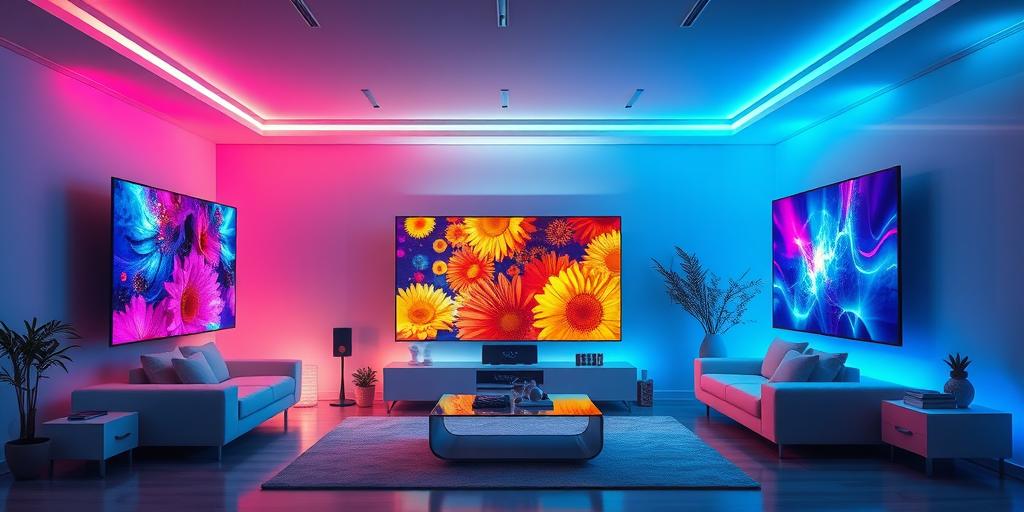Alright, folks, let's dive into the wild world of TV displays! It feels like just yesterday we were all geeking out over HD, and now we're swimming in a sea of acronyms like MicroLED, OLED, and QLED. What's the deal? Which one will be the king of our living rooms in 2025? Let's break it down in a way that doesn't require a Ph.D. in electrical engineering.
OLED: The Current Champ
First up, OLED (Organic Light Emitting Diode). These screens are the veterans, the ones that really made us say, "Wow!" Why? Because each pixel emits its own light. This means perfect blacks, insane contrast, and super vibrant colors. Think of it like each pixel having its own tiny light switch. Turn it off, and it's completely black. No light bleed, no compromises. OLEDs are known for:
- Incredible contrast ratios
- Super wide viewing angles
- Relatively thin designs
However, they're not without their quirks. OLEDs can be pricey, and there's the ever-looming threat of burn-in (when static elements like channel logos leave a ghostly imprint). Manufacturers are getting better at mitigating this, but it's still a consideration.
QLED: Samsung's Color Kingdom
Next, we have QLED (Quantum Dot LED). Now, before you think it's just another type of OLED, hold up! QLED is actually an LCD screen with a Quantum Dot filter. This filter enhances the colors and brightness, making them pop like crazy. QLEDs are generally brighter than OLEDs and often more affordable. Key features include:
- High peak brightness
- Excellent color volume
- Lower risk of burn-in compared to OLED
But here's the catch: QLEDs don't have the same black levels as OLEDs. Since they're still LCDs, they need a backlight, which means it's harder to achieve true blacks. You might see some light bleed or a less impressive contrast ratio.
MicroLED: The Future is Bright (Literally!)
Now, for the star of tomorrow: MicroLED. This is the new kid on the block, and it's packing some serious heat. MicroLEDs are like OLEDs on steroids. Each pixel is its own tiny LED, emitting light and color. This means you get the perfect blacks and insane contrast of OLED, but with even greater brightness and no risk of burn-in. MicroLED advantages include:
- Incredible brightness and contrast
- No burn-in risk
- Potentially longer lifespan
So, what's the catch? Right now, MicroLEDs are crazy expensive and primarily found in massive, modular displays. Think movie theater-sized screens for your mansion (if you're into that). The challenge is shrinking the technology down to more manageable sizes and making it affordable for the average consumer.
So, What's the Verdict for 2025?
Okay, so, who wins in 2025? It's tough to say for sure, but here's my prediction:
- OLED will still be a top contender, offering amazing picture quality at a (hopefully) more reasonable price.
- QLED will continue to dominate the mid-range market, providing a bright and colorful experience without breaking the bank.
- MicroLED will start to trickle down into smaller sizes, but it'll still be a premium, luxury option. Think high-end TVs for serious cinephiles.
Ultimately, the best TV for you will depend on your budget, viewing habits, and what you value most in a display. Do you want perfect blacks and don't mind paying a premium? OLED might be your jam. Need something bright and affordable? QLED could be the way to go. Or, are you a tech enthusiast with deep pockets? Keep an eye on MicroLED. No matter what you choose, the future of TV displays is looking pretty darn bright!




